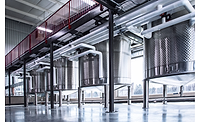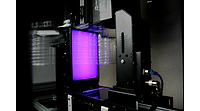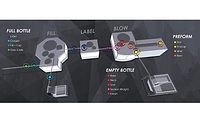Automation and efficiency advancing inspection equipment technology
Safety, freshness and cost-effectiveness key attributes

Safety and the importance of quality are driving inspection equipment trends. But companies asking for more cost-effective line efficiency are further expanding the pivotal role inspection technology plays in the process, experts say. Building on smart systems and process automation trends, packaging experts are able to monitor packaging integrity, challenges with filling, and more without sacrificing line speed or date markers.
Accessibility and freshness markers provide consumers reassurance that what they are drinking is safe and also easy to drink. It’s becoming the norm for torque specs to be included in requests for inspection equipment, according to Brian Belardinelli, sales manager at Pembroke, Mass.-based FT System North America.
“[Torque specs are important because] if you go to open a Gatorade [bottle] and it’s too hard to open, kids can’t open it at a baseball game,” Belardinelli explains. Inspection equipment technology is evolving to keep pace with torque specs and more, he adds.
Oliver Wyrsch, general manager at Mettler Toledo, Columbus, Ohio, confirms systems can be pushed to perform faster inspections to add in-line inspection without sacrificing production speeds or date markers.
“Mettler Toledo CI-Vision’s biggest developments made are on the software side, particularly with regards to in-line inkjet inspection — text like lot codes and expiration dates, for example,” he says.
The desire for precision results in a complex network of cameras, lasers — in some cases robots —checking positioning, marking and capping on every bottle. But ensuring primary packaging security is not enough for some beverage companies.
“Tamper-evident bands, sleeves and seals are designed to prevent the improper opening of a product, which could cause damage to not only the product itself, but also to the brand’s reputation,” explains Melissa Rossi, director of marketing at Teledyne TapTone, North Falmouth, Mass. “Pharmaceutical companies have used tamper-evident (and child-proof) packaging for decades, and food and beverage packagers are now adapting the technology for use.”
Maintaining quality
FT System’s Belardinelli says timing requirements to inspect earlier in the process are changing as well.
“We are seeing an increase in the requirement to inspect containers and closures before filling and sealing to ensure quality and accountability,” he explains. “This applies to glass and metal containers where FT System will inspect for foreign objects as well as any defects in the glass or the can that could affect safety or quality.”
FT System’s ROBO QCS brings a fully automated In-line inspection to the customer without causing damage or loss of product. Additionally, automated in-line sampling is on the rise by spirits and large beer producers, Belardinelli says.
The move to push systems to do more in-line inspections and sampling early and often without disruption ultimately reduces manual processes and the associated time and labor expense. This is where businesses notice considerable savings, he adds.
“Quality departments are being skimmed down,” Belardinelli says. “Rather than spend QA time, we have units now that take a sample every minute and take two minutes to check weights and torques before sending anything back.”
Packaging pressure
Beverage categories have unique needs, and inspection equipment and technology must be able to adapt to the variety in size, shape and material of the bottles.
Inspecting unique containers and hot-fill applications also require sound inspection equipment. “[Laser absorption spectroscopy] sounds complicated, but basically these systems will detect vacuum in hot- filled applications, pressure in LN2 dosed or carbonated applications or spoilage that results in bacteria growth simply by passing the sealed container through the lasers path on the production line,” Belardinelli says. “There is no contact with the container, so shape is a non-issue.”
Since containers also perform differently under pressure, evalution of the container should occur before inspection, Belardinelli notes. Rigid containers cannot use squeeze technology and may need to be inspected with sensors or lasers, he adds.
Companies are coming up with new software sytems and equipment to keep pace with demand. For example, compression system uses a conveyer with slight compression to increase pressure in the headspace before moving the container past pressure sensors. Finally, the internal pressure is measured before being released to a regular production conveyor. Designed for large containers requiring moderate leak detection sensitivity, TapTone’s easy-to-use system enables the user to set the reference points, Rossi says. The company also offers inspection systems for stand-up pouches.
“The TapTone PRO Series Pouch Inspector system finds and rejects leaking and damaged pouches at production line speeds up to 200 feet per minute,” the company said in a statement.
Experts note that the future of inspection equipment will be center upon more automation, less line downtime and increased accountability of line activities, whether manual or automated.
Inspection Acronym Breakdown
HF – High Frequency – Inspection process used for spirits and wine. Purpose: check weigher
RX – X-Ray – Inspection process used for canned products. Purpose: check weigher
IR – Infrared – Inspection process used for water. Purpose: level detector.
Inspection Company Showcase
FT System North America, Pembroke, Mass.
Inspection and Fill Level Sensors
FT System offers a broad range of inspection equipment for beverage lines, including PET. Inspection systems will inspect caps and bottles before they reach the filler or capper to remove any defects which could impact line efficiencies. Once the container is filled and capped, FT System will inspect for correct fill level and properly applied closures. Several different fill level technologies ensure the customer is not limited to a radiation emitting device. FT System cap inspection systems can range from sensor-based units up to four or even five camera systems depending on how critical the application is. Once the container is labeled, FT System offers a complete line of label inspection options that can be placed inside the labeler or after the labeler. Full case inspection systems make sure all the containers are in the case and no container was broken in the process. FT System has a unique fully automated, in-line quality control system (QCS120) that will inspect the container volume, closure torque and even CO2 content, then return the bottle back onto the production line.
Teledyne Taptone, North Falmouth, Mass
Fill Level Sensors
TapTone offers three distinct technologies for fill level inspection: x-ray technology, infrared optical technology, and vision technology. Our low energy x-ray system, Fill_xr, can inspect all container types including metal and is the most sensitive system TapTone offers. Our infrared optical system, Fill_ir and our range of vision-based systems can be used to detect fill level in transparent and semitransparent plastic and glass containers. All fill level systems require a User Interface for set-up and operation.
Infrared Sensor for Fill Level Inspection
The TapTone Fill_ir sensor is a non-contact fill level inspection module. The system uses Optical technology to detect an infrared beam, which measures the fill level of water based liquid products in glass and plastic containers. The Fill_ ir sensor utilizes a special emitter/receiver infrared wavelength tuned to the absorption band of water. This infrared beam penetrates the side of the container in the expected area of the fill level. The beam is powerful enough to pass through most types of plastic and glass containers but will not pass through water-based liquids. A receiver is positioned on the opposite side of the container to detect the beam after it passes through the container. When set to detect under fills, if the beam is detected by the receiver, then the container is under filled. When set to detect over fills, if the beam is not detected by the receiver (blocked), then the container is over filled. The Fill_ir sensor can be used to measure both overfilled and under-filled products in glass and plastic containers. High and low reject limits are defined by the user. Containers falling outside the user-set acceptance criteria are rejected.
Camera Sensor for Cap and Closure Inspection
The TapTone CapVu camera sensor is designed to perform visual inspection of container closures for missing caps, high caps, cocked/tilted caps, and missing tamper rings. The sensor includes a high speed digital camera and LED back light housed in a stainless-steel enclosure. The sensor mounts on a remote variable heights stand. The CapVu sensor can be added to existing TapTone systems as an optional inspection. The CapVu sensor uses vision technology to inspect the cap or closure on containers after they have been filled and capped. The CapVu sensor can be used to detect missing caps, high caps, cocked or tilted caps, and missing tamper rings on glass, plastic, and metal containers. A User Interface is required for operation of the sensor.
Mettler Toledo, Columbus, Ohio
Vision Inspection Technology
CI-Vision has a unique approach to easily integrate into existing lines to help manufacturers meet compliance, safety and accuracy, by examining containers, closures, labels and coding to ensure each consistently meets manufacturers' exacting quality standards and specifications every time. CI-Vision has the expertise and experience to successfully implement vision inspection technology into manufacturers' lines globally. Specializing in the inspection of packaging for food, beverage, pharmaceutical, personal care and household chemical products. Accurate, reliable rejection of improperly packaged products; ultra high-speed inspection capabilities; quick changeover process allows for reduced line downtime; application-specific material handing included; optional hygienic designs.
Looking for a reprint of this article?
From high-res PDFs to custom plaques, order your copy today!





